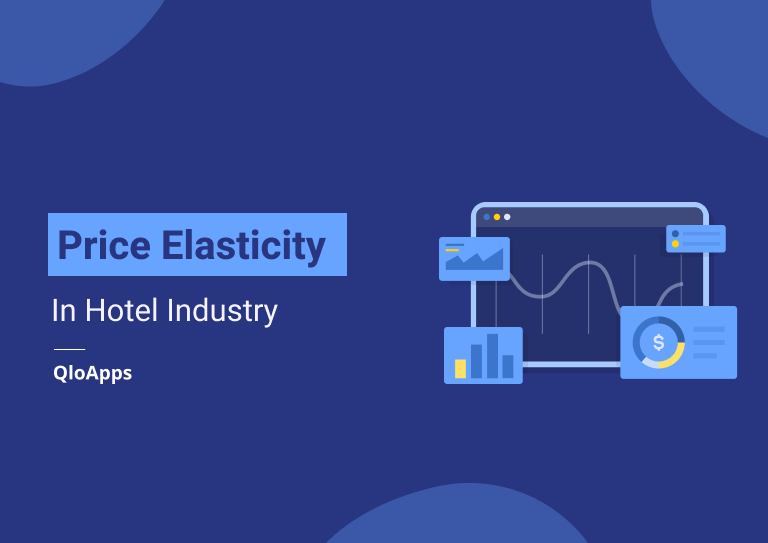Price Elasticity in Hotel Industry means the effect of a change in price on the hotel’s product or service demands.
In simple words, price elasticity means how people’s demand changes and shows their reaction to avail of the product and service at any price change.
What is Price Elasticity in Hotel Industry?
Price Elasticity in Hotel Industry is one of the vital KPIs to measure hotel performance. It shows the response and reaction of people in the demand of a product to the change in its price. It shows the relation between the price and the demand.

Generally, what is seen is that when the price of the hotel room goes down the hotel Demand get increases, and vice-versa. But this theory does not come out to be true every time.
According to human psychology in the hotel industry, people think less room price means poor quality and hospitality. With high prices, they will get good hotel amenities and facilities.
How to Measure Price Elasticity in Hotel Industry?
There is no rocket science to measure price elasticity. Price elasticity is measured as given below.
Price Elasticity = (percentage change in quantity)/(percentage price change)
It means less change in price more is the price elasticity and the more change in price less is the price elasticity.
Types Of Price Elasticity
There are two types of price elasticity. That is elastic and inelastic.
Elastic Demand:
Elastic demand means when there is a small change in the price and there is a high change in the demand.
The price demand curve of elastic demand is the shallow one. This curve shows higher the price, the lower the demand, and as the price goes down, the demand increases.
Inelastic Demand:
Inelastic demand means when the price changes, but no change in demand is seen.
The price demand curve is a vertical line. This curve shows that the demand is not changing even if the price is increasing.
What are the Factors That Affect the Price Elasticity in Hotel Industry?
Price elasticity in hotels is affected by multiple factors. These factors are discussed below:
Location of the Hotel:
The location of the hotel is one of the major parameters to affect the elasticity of the hotel. If the hotel’s location is prime, then these hotels have less price elasticity.
Because the customer has no problem paying the asked amount due to its prime location. Also, these customers are less price sensitive.
Whereas, if the location of the hotel is on the outskirts of the town, then the price of this hotel room is elastic. Here the people prefer the lower price hotel and change their choice as per the hotel price.
Season and Holiday Breaks
This is the peak time for the hotel industry. During this duration, hoteliers earned the most and had a good profit. At this time the demand is high for room booking.
The people plan their holiday trips and book hotel rooms as their accommodation. Therefore during this time, the guest will be high for the room booking, and they are ready to pay a little higher too.
Hence, the hotel price is less price elastic during the peak season.
Hotel Branding and Reviews
Yes, the hotel brand image affects the price elasticity in the hotel industry.
If the hotel has a good brand image and they have good customer reviews, then the customer will pay more. Here, the customer is paying for good facilities, good service, amenities, and infrastructure.
Hence, a good branded hotel is the least elastic.
So, if you want to earn more and gain profit, then try to make the hotel brand. For good hotels, branding tries to retain the old customer in hotel.
So, provide top-notch service to the customer with the promised amenities and services during the booking.
How to Manage Price Elasticity?
There are many ways to manage the Price Elasticity of Demand.
Historical Data of Hotel
Look at your hotel’s historical data. With that data, you can see when the customer is paying extra and when they are bargaining. So you can plan when you can raise the hotel room price and when it is least elastic.
KYC: Know Your Customer
Know about your customer and try to understand their behavior and background. This will give you the idea that you can raise the price of the hotel and you can set it accordingly.
Dynamic Pricing
Hotel dynamic pricing is an effective method to set the price of the hotel. With this, hoteliers set the price of the hotel by analyzing the real-time data based on demand, supply, and customer behavior.
Conclusion
The price elasticity of the hotel industry is one of the major factors that define the growth of the hotel. It can be elastic or inelastic.
Multiple reasons define the Price Elasticity of Demand. The hotelier can manage the price elasticity by dynamic pricing, knowing their customer and historical data of the hotel. All this will maintain the hotel demand and sale conversion.
Get In Touch
So, that is all for the Price Elasticity In Hotel Industry, I hope you like our article.
If you are looking to launch your hotel website, then QloApps is the free hotel reservation system. Please share your thoughts and queries on the QloApps forum.

Be the first to comment.